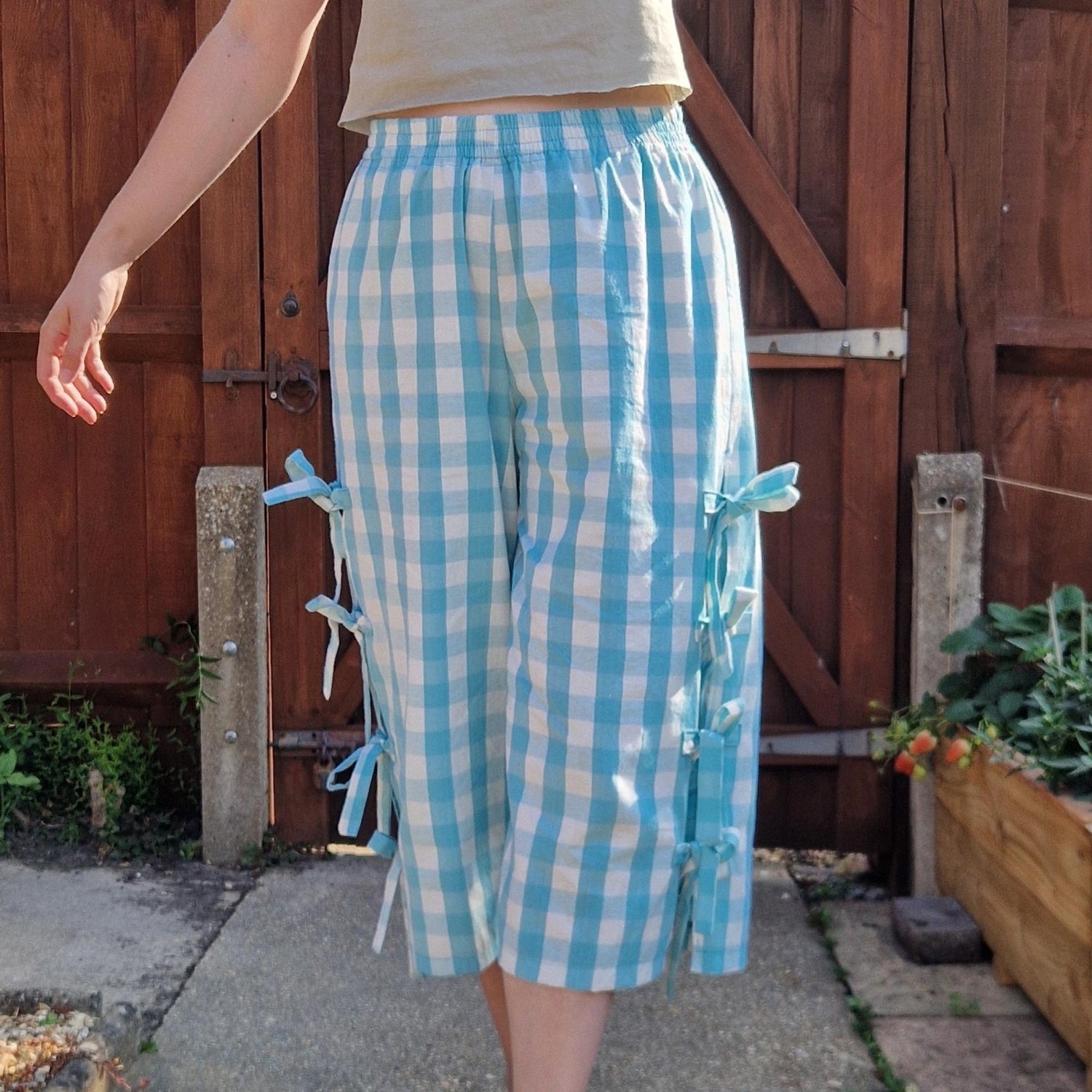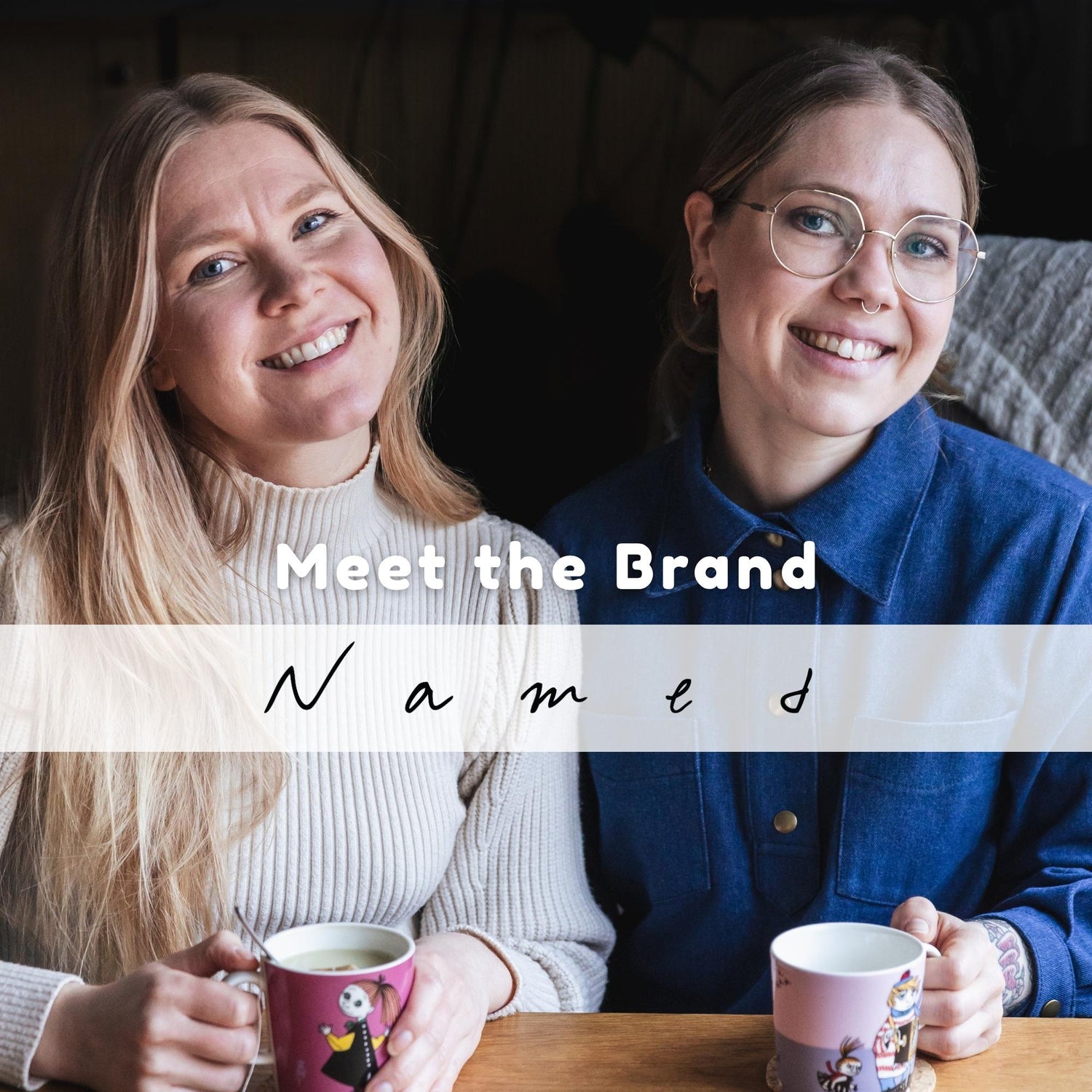Eco Scores Explained: How We Rate Our Eco-Friendly, Sustainable Fabrics
We’re here to bring sewists the best fabrics — without costing the planet or the people behind them.
Sew Eco Fabrics is built on ethical values, sustainable choices, and a mission to do business differently. Instead of chasing profit for profit’s sake, we’re focused on supporting our community and protecting our planet every stitch of the way.
That’s why transparency matters. While we’d love to only stock 100% sustainable fabrics, the reality of the textile industry makes that tricky — so we created our Eco Score system to help you understand exactly what you're buying and how it measures up.
Browsing our Fabric Stash with Sew Eco Scores
Each product in our shop is scored from 1 to 4 based on its sustainability credentials.
When browsing fabrics, you can use the Sew Eco Score filter to find materials that align with your values.
Just head to our Fabric Stash and use the filters on the left-hand side – right where you'd normally filter by things like Knit or Woven, Colour, etc.
What is Sustainable Fabric?
Ever found yourself wondering what sustainable fabric actually is? You’re not alone.
It’s one of the most misunderstood topics in sewing, thanks to years of greenwashing by the fashion and textile industries. “Sustainability” gets thrown around a lot — but that doesn’t always mean a fabric is truly eco-friendly or ethically made.
No wonder people roll their eyes at yet another eco-friendly fabric campaign — and honestly, I don’t blame you.
That confusion is exactly why I’ve written a separate blog post called “Most people think Sustainability is about the Environment, but it's not.” to help cut through the noise. In it, I explain the four pillars of sustainability — environmental, social, economic, and human — and how every stage and every hand a product passes through plays a role in how sustainable that fabric truly is.
Reality Check with Our Eco Scores
As you read through our Sew Eco Scores, keep in mind — these scores are all about how the fabric was made, not just how long it will last. It’s what we call Seed to Shop.
We’ve focused purely on the manufacturing and ethical practices behind each fabric — from the farming, fibre processing and dyeing, to how traceable and transparent the supply chain is.
We haven’t factored in fabric quality — and that’s because, in our experience, sustainable materials naturally tend to be high quality anyway.
Now, some might argue that a fabric can still be “sustainable” if it’s durable and long-lasting, even if its production wasn’t particularly eco-friendly. That’s valid. But here at Sew Eco Fabrics, our mission is to offer materials that are doing good right from the start.
That’s why our Sew Eco Scores reflect how a fabric was made — and how much we know about that process — before it even reaches our shelves.
Where does that leave Deadstock or Reclaimed Fabrics?
Great question. Since our scores are based on production transparency, most deadstock and reclaimed fabrics will land in Eco Score 1. It’s not because they’re poor quality — in fact, many are beautiful, well-made textiles — but because we often can’t verify how they were produced.
This includes fabrics we’ve rescued from mills, surplus rolls from past production runs, or those I’ve reclaimed from closing down fabric shops. These fabrics deserve a second chance — and if they’re being saved from landfill or incineration, that’s a win in our books.
🧵 Sew Eco Score Breakdown
Each fabric we stock is scored from 1 to 4 — based solely on how sustainably it was made. Think of it as a quick way to understand the Seed to Shop story: how it was grown, processed, dyed, and handled by people along the way.
Eco Score 1
Used Only for Deadstock or Reclaimed Fabrics
This is our lowest score, but still meets our minimum criteria to be stocked — and it’s only used in rare cases, specifically for deadstock or reclaimed fabrics.
What’s missing is transparency. These fabrics don’t come with eco certifications, and we can’t confirm how they were grown, dyed, or manufactured. That means we can’t verify their sustainability or ethical standards — which is why they sit at Score 1.
So why stock them?
Because giving these fabrics a second life is better than letting them go to waste. They may have come from mills with leftover rolls, or be rescued from fabric shops that have closed down. They still have value — and we’d rather see them sewn than landfilled.
Note: When we consciously choose new fabrics to stock, they will always have either:
-
Recognised eco certifications
-
Or come from suppliers who work with ethical mills and follow eco-focused practices — even if they can’t certify their full production line.
Eco Score 2
Our Minimum Standard for New Fabrics
Fabrics in this category must:
-
Be made from natural fibres
-
Have at least one eco-certification
That might sound great — and it is a step in the right direction — but it doesn’t tell the full story. These fabrics often come with limited transparency around how they were produced or who made them.
For example:
If a fabric has OEKO-TEX Standard 100, it means it's been tested for harmful chemicals — but that doesn’t cover how the fibres were grown, the environmental impact of dyeing, or the working conditions of the people involved in production.
So while Score 2 fabrics have eco-friendly elements, they don’t yet meet our higher standards to be classed as "sustainable"
Top Tip: If you spot a fabric being advertised as "eco-friendly," chances are it sits at this level — because a single certification is often the baseline used in mainstream marketing.
Eco Score 3
Strong Sustainability & Ethical Efforts
Fabrics in this category are made from natural fibres and come with one or more eco-certifications.
Along with an accreditation, they must also show that at least one of the following:
-
🌿 Organically grown fibres
-
Fair wages and safe working conditions
-
🔍 Regular supply chain visits and third-party inspections
-
Fully traceable manufacturing process
-
Open and transparent supplier communication
-
♻️ Made with materials that are recyclable, biodegradable, or compostable
These fabrics go beyond the basics — and reflect suppliers who are actively working to do better for both people and the planet.
Eco Score 4
Our Highest Standard
This is the top tier of our Sew Eco Scores — reserved for fabrics that are as sustainable and ethical as it gets.
To reach this score, fabrics must:
-
Be made from plant-based, natural fibres
-
Hold multiple eco-certifications (e.g. GOTS, OEKO-TEX, TENCEL™, etc.)
-
Be made using low-impact dyes and processes
-
Come from transparent suppliers with full traceability
-
Be biodegradable, compostable or recyclable
These fabrics are designed with a full loop life cycle in mind — from seed to soil again. Every stage of their journey is carefully considered to minimise harm and maximise positive impact on the environment and the people who make them.
When you see a fabric rated Eco Score 4, you’ll know it’s a conscious, top-tier choice for your sustainable sewing.
In a Nutshell
Our Sew Eco Scores are here to help you make more informed, intentional choices — without the overwhelm.
We know sustainable sewing isn’t always straightforward, but by being transparent about where our fabrics sit on the sustainability scale, we hope to make that journey a little easier (and a lot more empowering).
Whether you’re looking for fully certified organic cottons or giving beautiful deadstock a second chance, you deserve to know the story behind the fabric.
✨ Sew with purpose. Shop with confidence. And know that every score helps you stitch a little more sustainably.
🔍 Browse our Eco-Rated Fabrics
🧵 Read: What is Sustainability?



